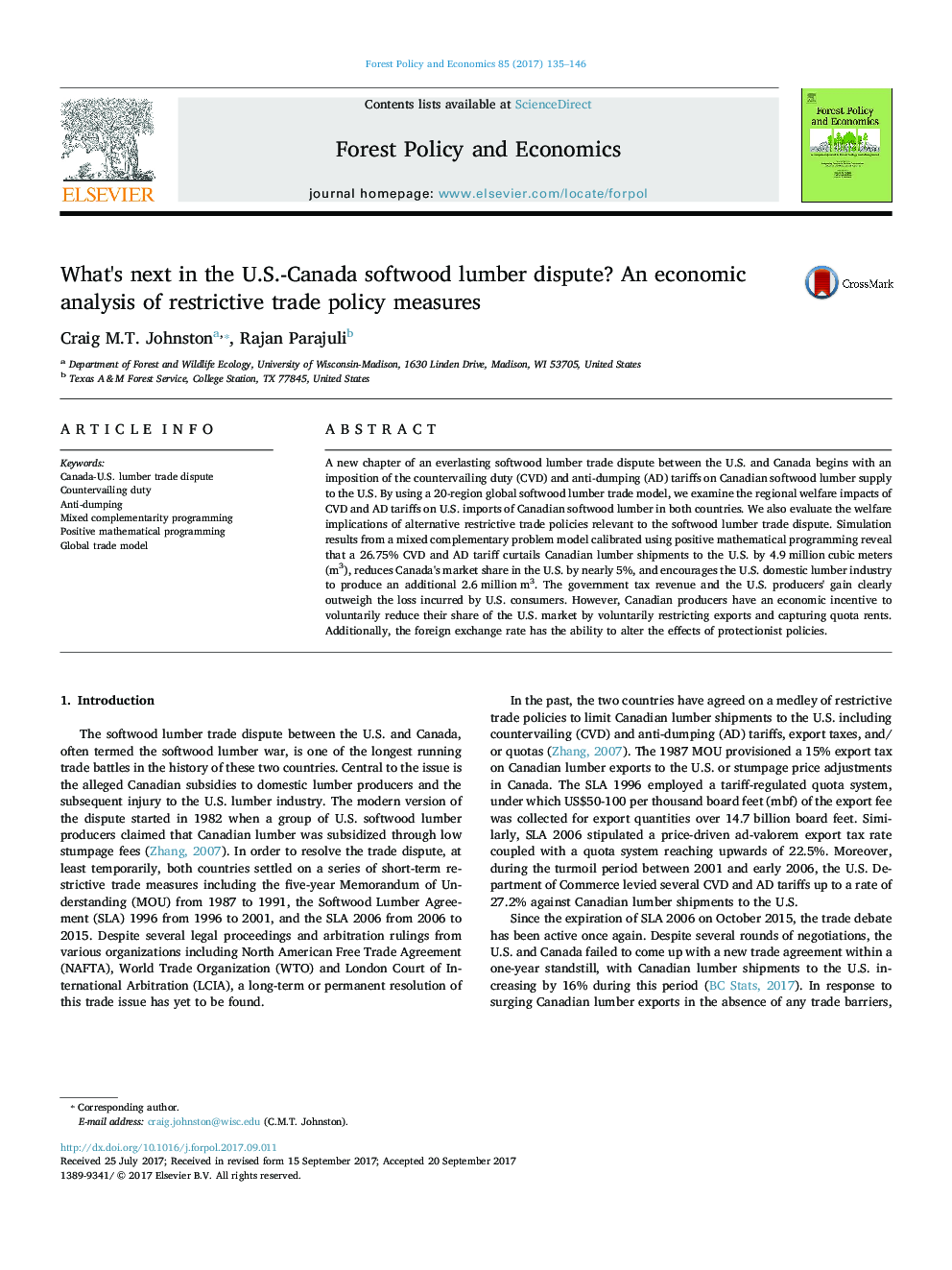| کد مقاله | کد نشریه | سال انتشار | مقاله انگلیسی | نسخه تمام متن |
|---|---|---|---|---|
| 4759728 | 1421654 | 2017 | 12 صفحه PDF | دانلود رایگان |
عنوان انگلیسی مقاله ISI
What's next in the U.S.-Canada softwood lumber dispute? An economic analysis of restrictive trade policy measures
ترجمه فارسی عنوان
بعدا در مخالفت چوب الیاف ایالات متحده کانادا چه اتفاقی می افتد؟ تجزیه و تحلیل اقتصادی سیاست های محدود کننده تجارت
دانلود مقاله + سفارش ترجمه
دانلود مقاله ISI انگلیسی
رایگان برای ایرانیان
موضوعات مرتبط
علوم زیستی و بیوفناوری
علوم کشاورزی و بیولوژیک
جنگلداری
چکیده انگلیسی
A new chapter of an everlasting softwood lumber trade dispute between the U.S. and Canada begins with an imposition of the countervailing duty (CVD) and anti-dumping (AD) tariffs on Canadian softwood lumber supply to the U.S. By using a 20-region global softwood lumber trade model, we examine the regional welfare impacts of CVD and AD tariffs on U.S. imports of Canadian softwood lumber in both countries. We also evaluate the welfare implications of alternative restrictive trade policies relevant to the softwood lumber trade dispute. Simulation results from a mixed complementary problem model calibrated using positive mathematical programming reveal that a 26.75% CVD and AD tariff curtails Canadian lumber shipments to the U.S. by 4.9 million cubic meters (m3), reduces Canada's market share in the U.S. by nearly 5%, and encourages the U.S. domestic lumber industry to produce an additional 2.6 million m3. The government tax revenue and the U.S. producers' gain clearly outweigh the loss incurred by U.S. consumers. However, Canadian producers have an economic incentive to voluntarily reduce their share of the U.S. market by voluntarily restricting exports and capturing quota rents. Additionally, the foreign exchange rate has the ability to alter the effects of protectionist policies.
ناشر
Database: Elsevier - ScienceDirect (ساینس دایرکت)
Journal: Forest Policy and Economics - Volume 85, Part 1, December 2017, Pages 135-146
Journal: Forest Policy and Economics - Volume 85, Part 1, December 2017, Pages 135-146
نویسندگان
Craig M.T. Johnston, Rajan Parajuli,
